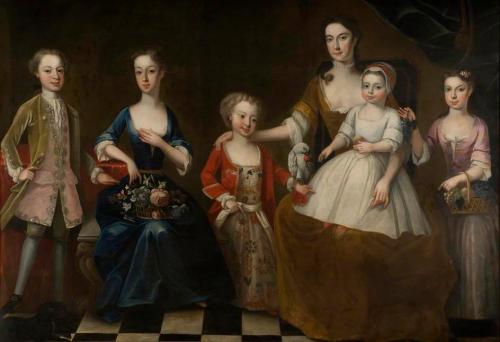Self Portrait (1691), Michael Dahl
Browsing Michael Dahl’s back catalogue feels, for some reason, like one is gazing upon an identity parade of caricatures. This has ultimately lead to the conclusion that either Dahl was not the most flattering of painters, or that his subjects were simply just plain butters. We may never know. Repugnancy aside, I would instead like to focus on one of Dahl’s more easy-on-the-eye paintings, which resides at – you’ve guessed it – the National Portrait Gallery. The piece I am talking about is a self portrait of Mr Dahl himself and, rather surprisingly, isn’t hideously ugly. What initially drew me to the study was not the unusually flattering style of the painting, however, but its uncanny resemblance to The Young Ones comedian, Rik Mayall – funnily enough… (As an aside, the boyf maintains strongly that this is untrue and that in fact there is a striking similarity between Michael Dahl and Mamma Mia actor, Dominic Cooper . The silly fool, it looks nothing like him.) So without further ado, here is the painting itself for you to come to the correct conclusion:
Yes, I know what you are thinking: what on earth is Rik Mayall doing in a 17th Century painting? This likeness is astounding! Well worry not, little reader, I shall explain everything… (disclaimer: explanation does not actually contain any information about the funny man. Idiot.)
Born Mikael Dahl (that’s Swedish for Michael Dahl) on 29th September, 1659 in the city of Stokholm, Sweden, Dahl was educated and trained in the ways of the painter by Baroque artist David Klöcker Ehrenstrahl. Twenty three years later, Dahl left Stokholm for the English capital, where he produced most of his work under the patronage of folks such as Queen Anne and Tory family, the Harleys. During this time Dahl only had one major rival: fellow portrait painter, Godfrey Kneller.
This particular painting of Dahl was completed in 1691 when the artist was thirty two years old. A suitably handsome man, as I’m sure you’ll agree, the charming Michael can be seen dressed in what appears to be a rather pleasant fern-green velvet jacket, with a dark aubergine and navy cloak draped around him. Now the green to me alludes to youth and inexperience, suggesting that Dahl perhaps views himself as something of a new-guy-on-the-block. The purple tones, on the other hand, could refer to his work in the royal courts at a fairly young age.
Next on the agenda would be to take a closer look at the composition, hand gestures and facial expression of our figure. As you can see two thirds of the painting comprises of the artist himself, whilst the remaining third contains what one can only assume to be an example of his own work, complete with tools of the trade positioned precariously adjacent to it. The positioning of the body directs the gaze onto said artwork and tools, which, combined with those blatant hand gestures, give the impression that the artist is potentially dissatisfied with the recognition – or lack thereof – he has been experiencing with regards to his artistic prowess, and consequently feels obliged to express this malcontent through his medium of expertise. I am almost willing myself to interpret the look upon the poor man’s face to be one of impatient disdain, as if to say, ‘Yes, I am an artist. I have painted for royalty at such a young age. Well done for noticing…’ But then again, I do have an unhealthy penchant for sarcasm. In all seriousness though, what fascinates me is how different the style is of this piece is when compared with an example of one of his commissions, such as the one below entitled, The Flesher Family (1734):
What a motley crew. Especially that middle one… W.O.W. Not pretty, not pretty at all. In all honesty, I cannot imagine a single family that would be happy to pay for a piece of art that depicts their offspring as featuring heavily in the nose department, but there we go. Perhaps beak = bucks, or something like that.
Another variation between the style of his commissions and Dahl’s own self portrait is that the tones of the latter are far more stripped back and muted than those of the former, evoking, what I believe to be, a more empathetic reading of the piece. The viewer is more inclined to want to take on the gaze of an unassumingly handsome artisan, rather than of the gaudy-yet-sickly, elongated faces of aristocracy. Perhaps this was Dahl’s way of ‘sticking-it-to-the-man’, a constant bitterness toward a dependancy on patronage. The echoes of the Renaissance are doubly at play here in the way that Dahl painted his own face with such due care and attention to tradition, mimicking those Antiquity-loving 15th century artists of the south; as well as cleverly drawing the audience member’s attention to the stone sculpture in the archway, which, to me, pays additional homage to that Golden Age of Classical art.
To close, I would like to simply say that if I ever decide to paint others and myself for a living, I only hope that I would have the Michael Dahl-esque sense of humour to paint myself as beautiful and everyone else as gawky, waxy-looking freaks. Ha.

